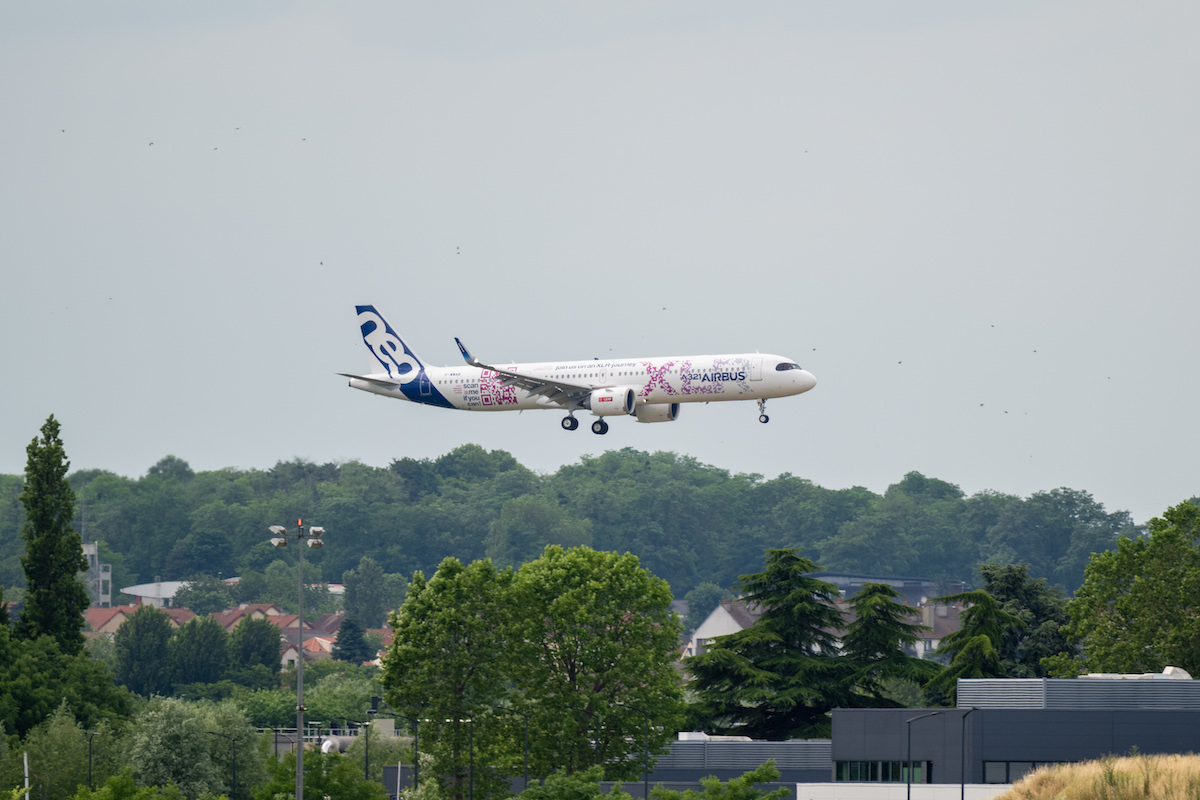Skift Take
JetBlue, Qantas, United and others may be about to get a big range disappointment from Airbus' newest jet.
Airbus is grappling with a growing shortfall in the range of its upcoming A321XLR passenger jet after reaching an agreement with European regulators on design safeguards needed to achieve certification, industry sources said.
The setback has prompted the planemaker to offer some customers potential deals for the larger A330neo to help them fill a gap in targeted performance, the sources said.
“Airbus expects no significant impact on the XLR’s unique range advantage in the single-aisle segment,” an Airbus spokesperson said in response to a Reuters query.
Launched in 2019 to expand on the successful A321neo jet and steal a march on Boeing’s plans to build a new jet in the middle of the market, which were later abandoned, the A321XLR made its air show debut at Le Bourget outside Paris last month.
The plane’s design calls for a novel type of rear central fuel tank, moulded into the contours of the fuselage, to eke out more space for fuel and extend the range by 15% compared with Airbus’s most capable current single-aisle model, the A321LR.
But the design raised concerns among regulators about the risk of fire and evacuation times in the event of an accident, prompting talks over design changes needed for certification.
Airbus programs head Philippe Mhun told FlightGlobal in an interview last month that Airbus had reached agreement with the European Union Aviation Safety Agency (EASA) on a basis for certification including the design of the new fuel tank.
The modifications call for a special protective liner to be added to the fuel tank as well as other reinforcements, he said.
Two industry sources said the cumulative total of changes to the structure had added some 700 to 800 kilos (1,543-1,764 lbs) to the weight of the plane compared with earlier estimates of 200-300 kilos.
This would trim the maximum range, which Airbus officially pegs at 4,700 nautical miles (5,409 miles). One told Reuters the changes would knock some 200 nm (230 miles) off the practical range, which was closer to 4,000 nm in normal operations.
“The A321XLR is going to be more limited on range due to additional weight that has to go on to the aircraft,” a third industry source said.
The range is seen as especially important for airlines like New York-based JetBlue, which is expected to be among the first users and which aims to use the planes to open routes in Latin America or fly deeper into Europe. JetBlue did not immediately respond to a request for comment.
Airbus aims to certify the A321XLR by end-year and deliver the first aircraft in the second quarter of 2024.
(Reporting by Tim Hepher, Additional reporting by Rajesh Kumar Singh, Editing by Louise Heavens)
This article was written by Tim Hepher from Reuters and was legally licensed through the Industry Dive Content Marketplace. Please direct all licensing questions to [email protected].
![]()
The Daily Newsletter
Our daily coverage of the global travel industry. Written by editors and analysts from across Skift’s brands.
Have a confidential tip for Skift? Get in touch
Photo credit: Airbus' new long-range jet, the A321XLR, lands in Paris. (Airbus) Airbus
